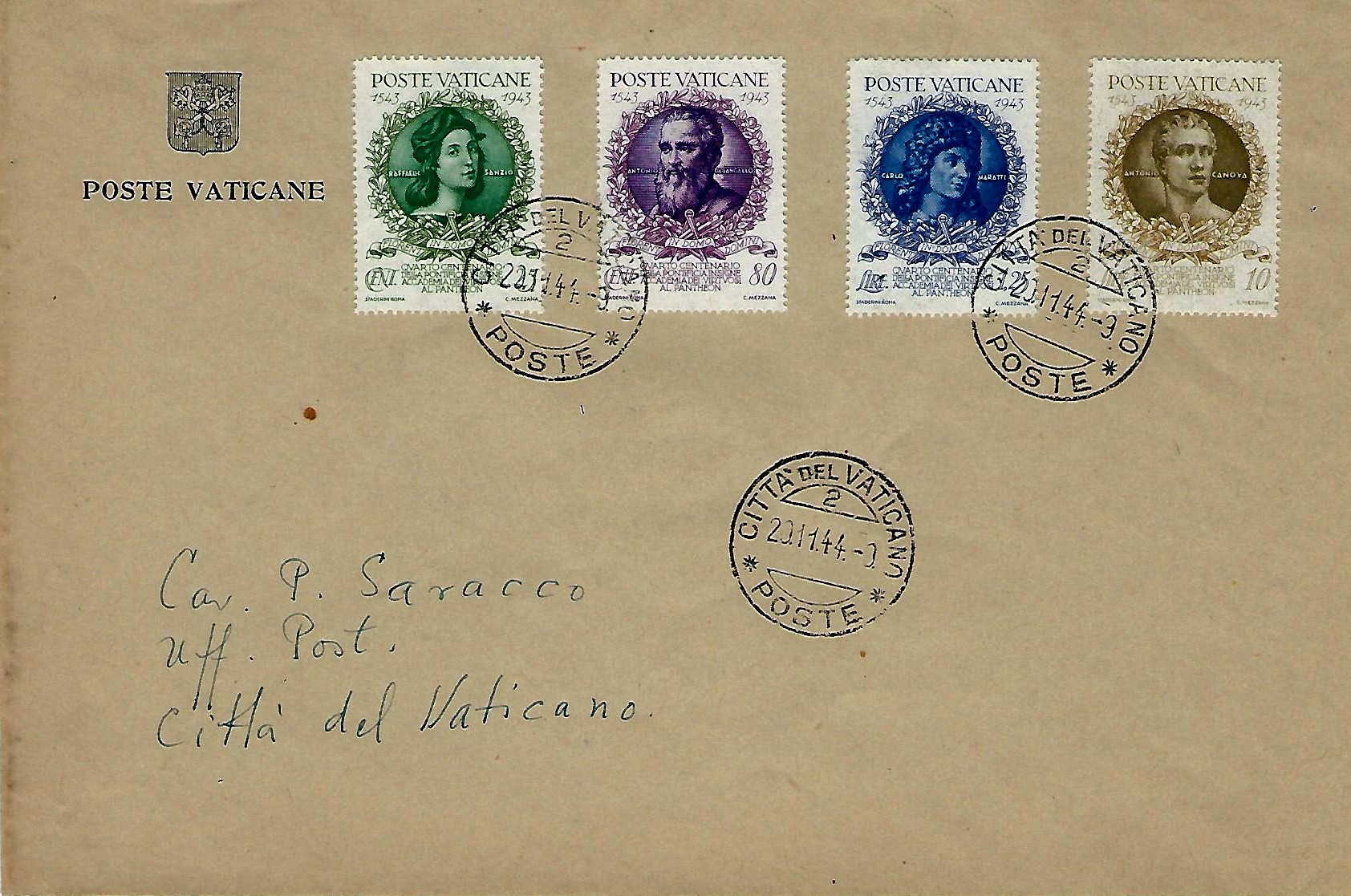
Home




In 1944, a set of four stamps above was issued to commemorate the fourth centenary of the establishment of the “Pontifical Academy of the Virtuosi of the Pantheon”, founded in 1542 by Pope Paul III. The stamps honored Raphael Sanzio, Antonio de Sangallo, Carlo Maratti and Antonio Canova. This article is taken from an issue of Vatican Notes and looks specifically at Antonio Canova.  Antonio Canova Pontifical Academy of Virtuosi at the Patheon Scott 90 (1944) Antonio Canova was born Nov. 1, 1787, at Possagno, Treviso. Educated by his grandfather, a stone cutter, he began to model at the age of 10 and was sent to Bassano by Senator Falieri to study under Torretto. Here he stayed for two years and returned to Possagno. Through Falieri’s influence he was sent to Venice, where he spent a year under Torretto’s nephew and the next four in independent work. At the age of 16 he produced his Euridice, followed by Orpheus and Daedeus and Icarus. In 1780 he came to Rome and was influenced by the ancient sculpture found there, improving with each work: Theseus and the Monotaur, a monument to Clement XIV at Santi Apostoli, and the tomb of Clement XIII in St. Peter’s. Several masterpieces of mythological characters followed. Napoleon I called him to Paris in 1802 to do both a cull size and a bust of the emperor and other members of the Bonaparte family. 1807 saw the bust of Pius VII, one of his best portraits in marble. He was an indefatigable worker, working on commissions, and in his spare time working on “his leisures” which themselves are well known. As the Pope’s envoy he went again to Paris in 1815 to negotiate the return of art treasures stolen from Italy by Napoleon, and by his efforts recovered most of the spoils. For his service, he was created Marquis of Ischia. In this period, he blocked out his gigantic statue of Religion which was so large that no place could be found for it, but he repeated it on a smaller scale for Lord Brownlow. In 1818 he executed a statue of Washington for the State Senate at Raleigh, North Carolina. In this period, he also sculptured the statue of Pius IV (seen in the Confessio of St. Peter’s). He is recognized as the greatest Italian sculptor of modern times. With his talent he lifted sculpture from the low state into which it had fallen in the previous 200 years. The finish of his statues was soft and velvet like, the flesh having the appearance of bloom. He was gentle, modest, generous and of a religious nature. The wealth that came to him was spent to train youthful sculptors. He was a member of the French Institute and had a perpetual presidency of the Roman Academy of St. Luke. He never married and his name is extinct, except in the descendants of his stepbrothers. Death overtook him in Venice on Oct. 13, 1822, and he was buried at his native Possagno, where he had spent large sums erecting a memorial church after the style of the Pantheon. This article first appeared in Vatican Notes (Volume V, No. IV, December 1956-January 1957). It has been lightly edited to add the first paragraph and the stamp of Antonio Canova. Interesting note: the first day of issue, as listed in the Scott Catalogue and Bolaffi Catalogue, is November 21, 1944, for the "Pontifical Academy at the Pantheon" issue. However, check out the first day cover at the bottom of the page: it is dated November 20, 1944! Technical Details: Scott Catalogue - 87-90 Date Issued - 21 November 1944 Face Value - 25c, 80c, 1.25 l, 10 l Perforations - 14.25x14 Printer - Stadterini Roma |
| (Vatican Notes, Volume V, No. IV, December 1956-January 1957) |
